SCVJeff
Aug 18, 2013Explorer
Batwing vs.BatMan vs. Jack: The Results.. finally (LONG)
I finally had time to buy a King Controls Jack antenna (on sale) for a shoot-out with my existing Winegard Batwing antenna with the Wingman add-on. This is the Jack replacement head that is a direct replacement on the Winegard mast.This test was done in Santa Clarita, just North of Los Angeles and 33 miles NW of Mt. Wilson, the 5000’ central transmit site for all the primary TV stations in LA, Orange, and significant parts of Ventura, San Bernardino, & Riverside Counties. What’s unique in Los Angeles is that we have an entirely loaded up UHF and VHF TV spectrum with VHF Ch.7, 9, 11, 13 all occupied and perfect for looking at these antennas. While there are stations scattered all over the area, Wilsom is where all the big boys live.
The following screen shots were generated by a Rhode & Schwartz ETL Spectrum Analyzer plugged into the Aux TV output of the Winegard switchbox in the RV. All lights: LED and Florescents are off to keep the RFI down to just the noise generated by the antennas internal pre-amp. That’s why there are also pics showing the pre-amp Off on each antenna and band, just to see how much noise they generate in addition to amplifying the signals at the antenna.
The measurements done were:
- Both Batwing & Jack pointed directly at Mt. Wilson on UHF. This same test was done with and without the Wingman attached on the Batwing.
- Both batwing & Jack pointed directly at Mt. Wilson on VHF. Wingman not tested has as it has no effect on VHF
- Additionally I took measurements at: -90, -45, +45, +90, and -175 degrees (mechanical stop problem). These are +& - measurements from the primary path of 116 degrees(mag) direct to Mt. Wilson.
The technical folks here will be able to read these pix, but for the non-technicals, pay particular attention to M1. M(arker)1 is simply a measurement point that measures antenna signal at the exact same frequency for consistency and displays the result number at the top of the screen. BTW- M1 is showing the TV carrier of Ch.36 (KTLA) on UHF, and Ch.7 (KABC) on VHF . LOWER NUMBERS ARE BETTER! Even though these numbers don’t move more than 10 points or so, any change of +-3db is (in marketing lingo) a 100% change in performance. The Wingman increased the Batwing performance by 3db (that can again be seen if you compare a Wingman and non-Wingman pic side by side) on UHF, so they claimed a 100% improvement. Technically true, but as a broad stroke explanation, assume that this 3db difference can easily make the difference between watchable TV or none at all, and the Wingman has proven that. Also when looking at the skew data the techies may notice that the scans are not exactly the same carrier-wise. Thats because I have adjacent channels in the high desert and toward Santa Barbara that will pop up if pointed in that direction. But they have no affect on this data.
If you look at the different signals on each picture, they should track each other. i.e.- The level differences between M1, or the carrier that it is measuring in the screen shot should look, or move vertically in level, exactly the same on all of the TV signals shown in the screen shot. If not, there are possibly response or physical design issues on the antenna. Not broken, just not perfect. Sorry for all of the pix, but it is what it is if someone wants to be able to review any combination in any direction in the future.
Here goes:
Pic #1:
Here is a shot of the Batwing with the Amp OFF just to see how the noise floor changes.
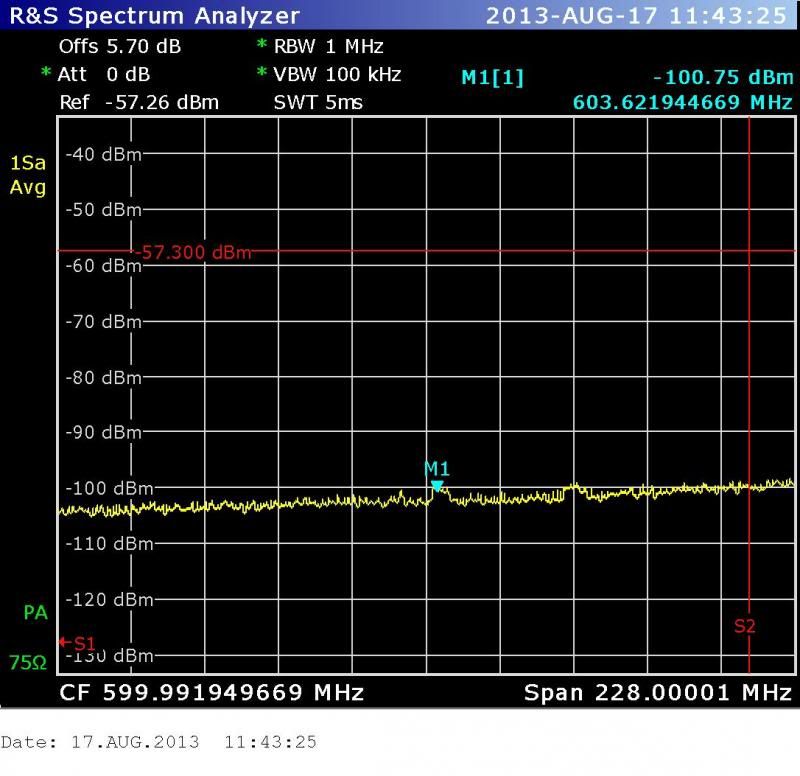
Pic #2:
No change in the noise floor. Thats good! OK, Batwing/ Wingman, Preamp on, pointed at Mt. Wilson on UHF
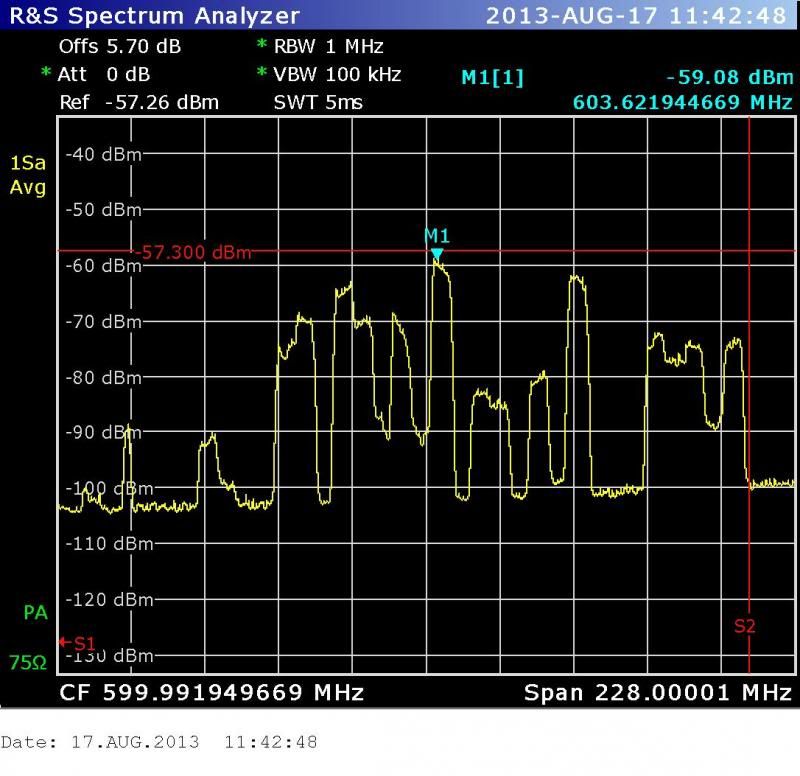
Pic #3:
Batwing/ Wingman pointed -45 degrees from Mt. Wilson on UHF
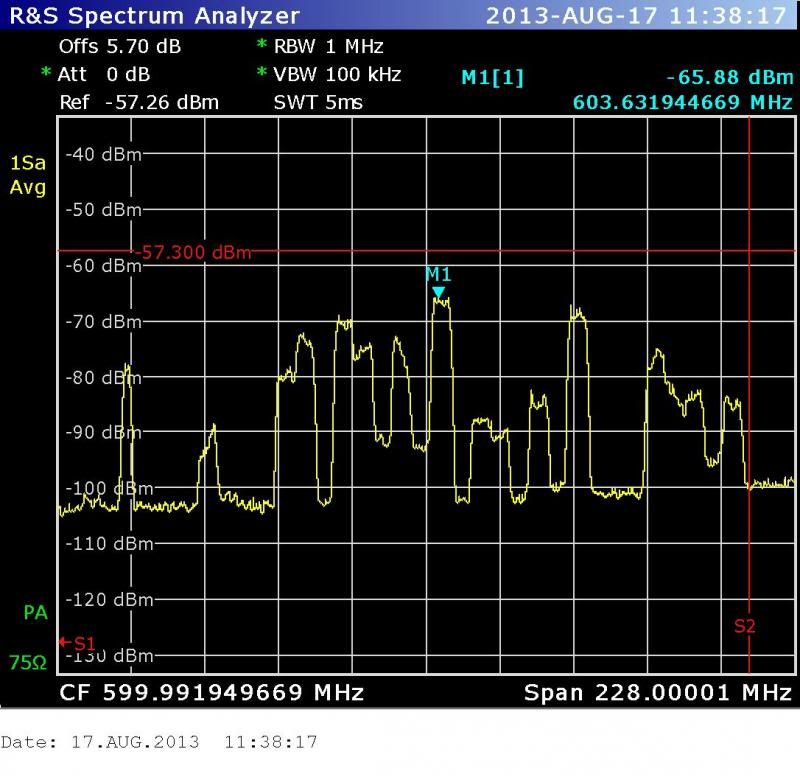
Pic #4:
Batwing/ Wingman pointed -90 degrees from Mt. Wilson on UHF
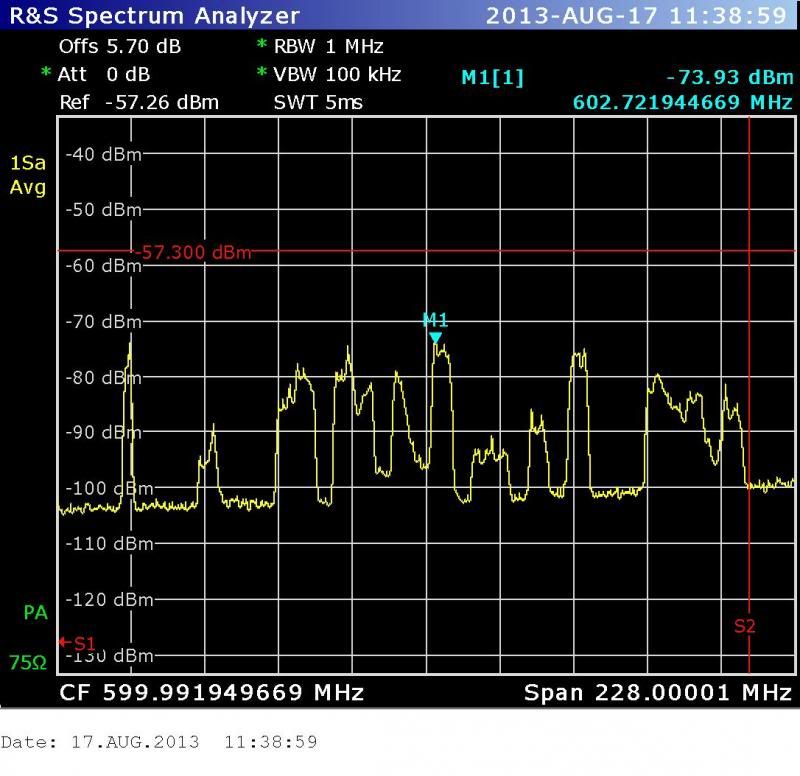
Pic #5:
Batwing/ Wingman pointed +45 degrees from Mt. Wilson on UHF
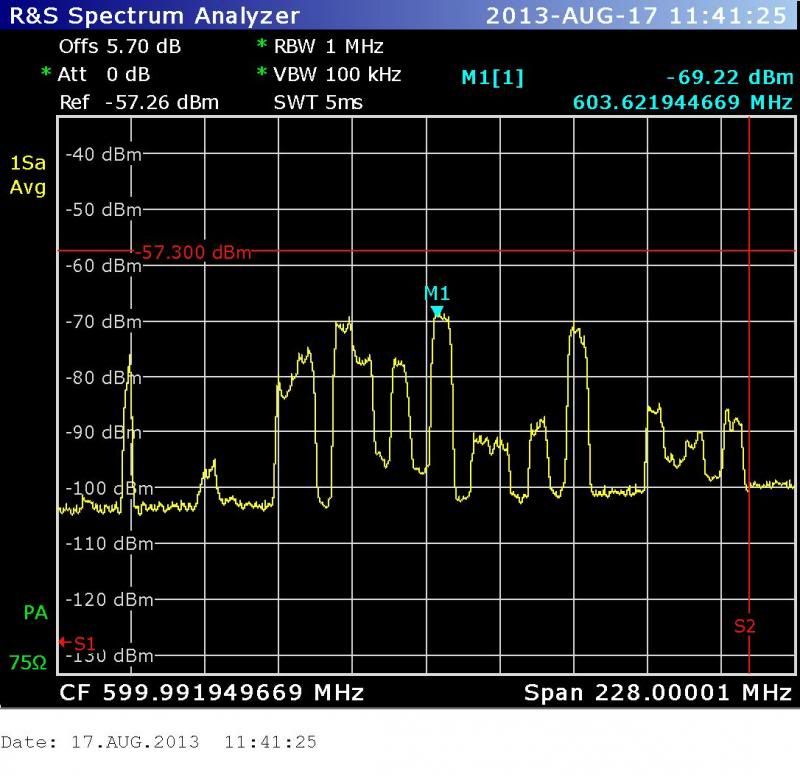
Pic #6:
Batwing/ Wingman pointed +90 degrees from Mt. Wilson on UHF
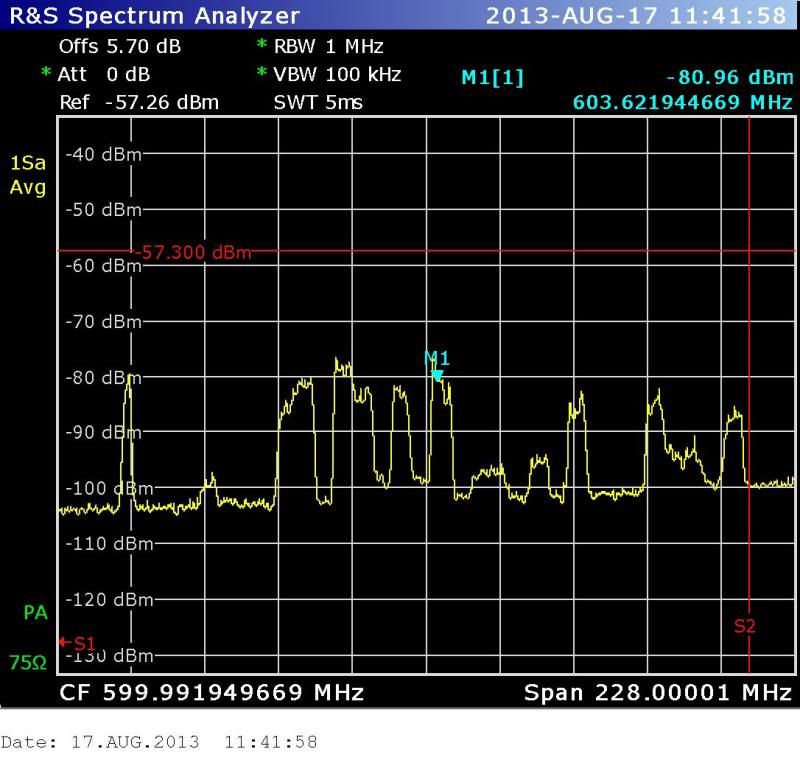
Pic #7:
Batwing/ Wingman pointed -175 degrees from Mt. Wilson on UHF (Backwards)
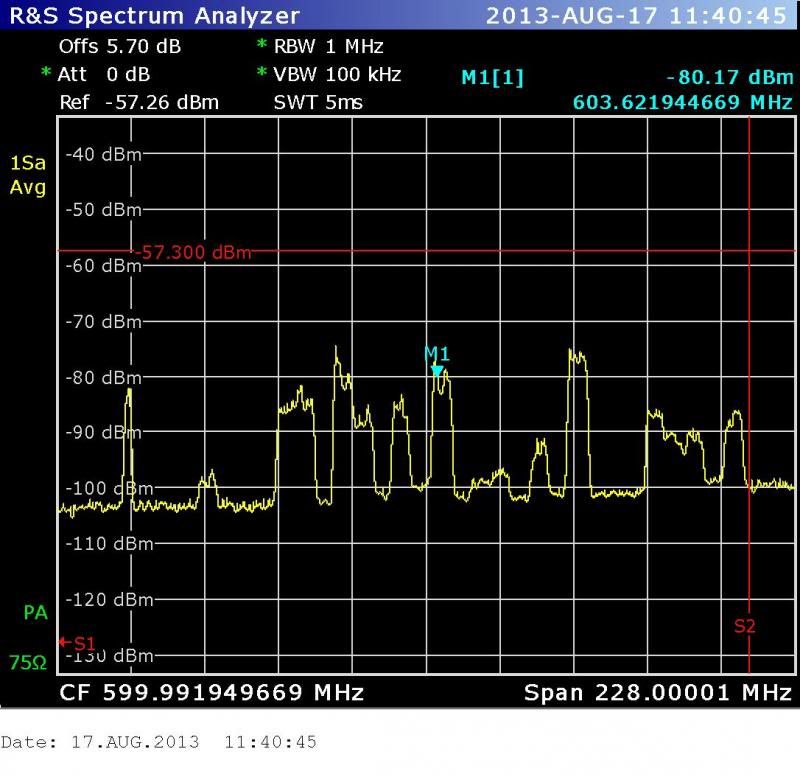
Looking at M1, a 21db difference is huge! This is a very directional antenna from 90 degrees around to the back of the antenna, to 270 degrees. Thats a good thing as it helps eliminate reflections and interference from other nearby transmitters.
Pic #8:
THESE ARE THE BATWING VHF TESTS
Batwing only pointed at Mt. Wilson on VHF

Pic #9:
Batwing only -45 degrees from Mt. Wilson on VHF
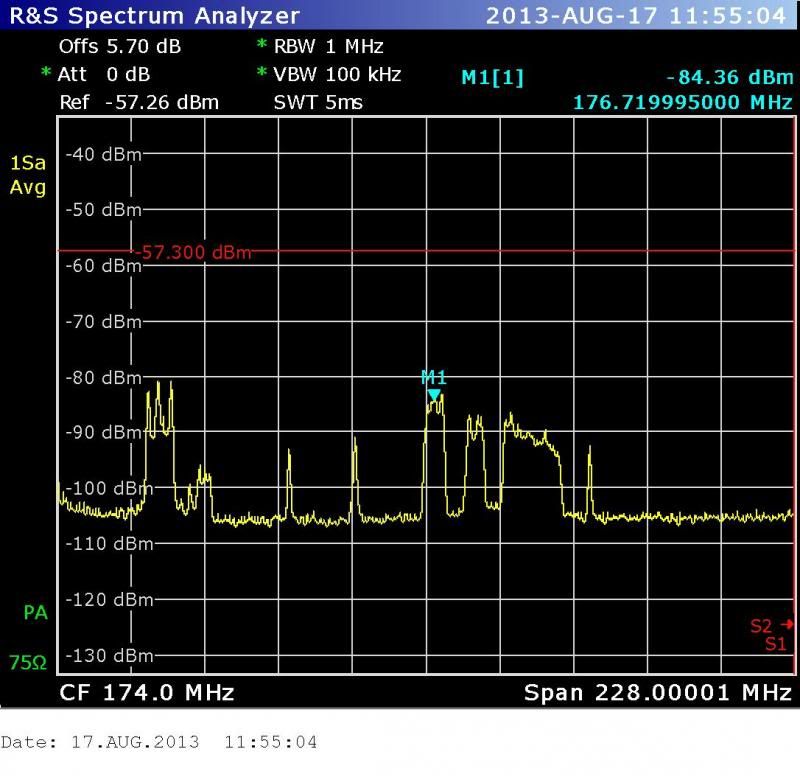
NOTE: + & - 90 DEGREE OR BACKSIDE TESTS WERE NOT PERFORMED ON VHF
---------------------------------------------------------------------
BATWING UHF TESTS WITH WINGMAN REMOVED
Pic #10:
Batwing only pointed at Mt. Wilson on UHF
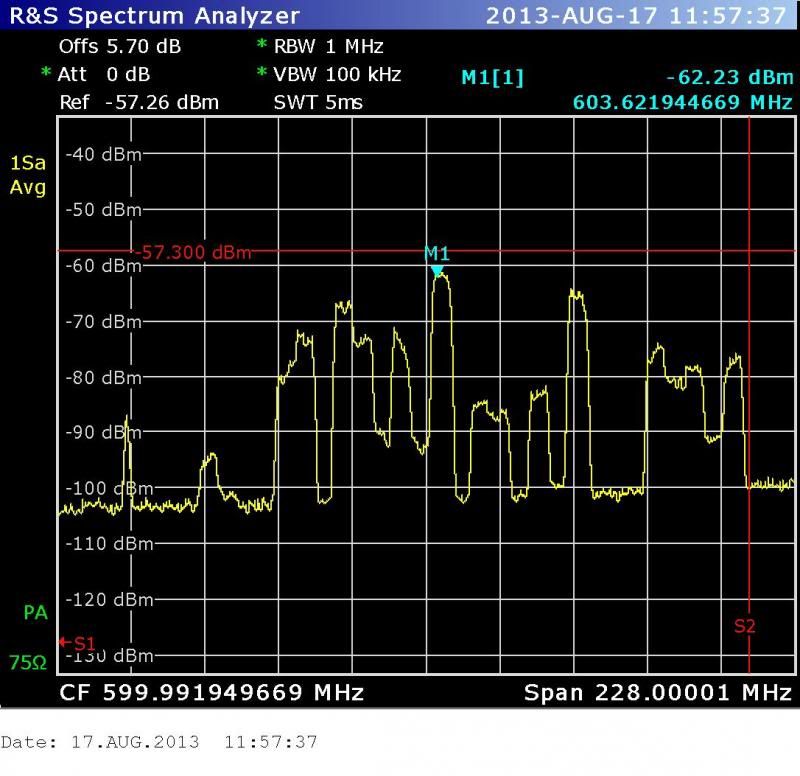
Pic #11:
Batwing only -45 degrees from Mt. Wilson on UHF
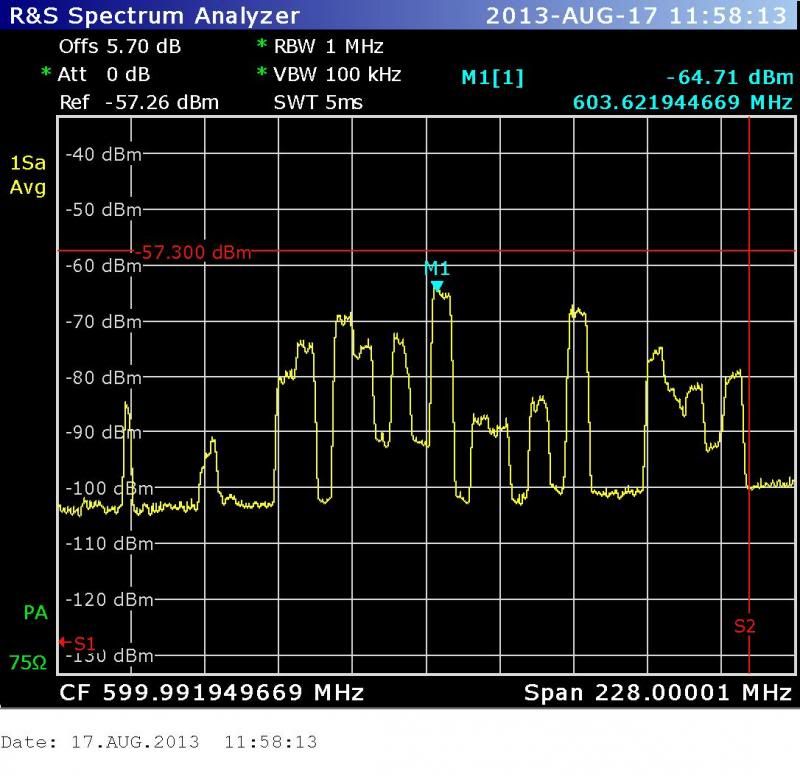
Pic #12:
Batwing only -90 degrees from Mt. Wilson on UHF
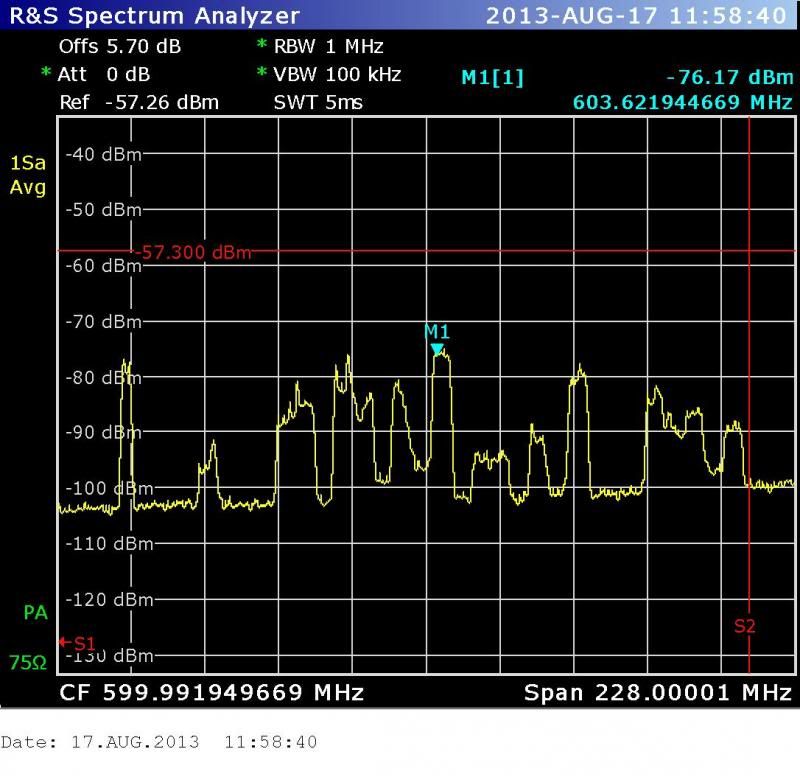
Pic #13:
Batwing only +45 degrees from Mt. Wilson on UHF
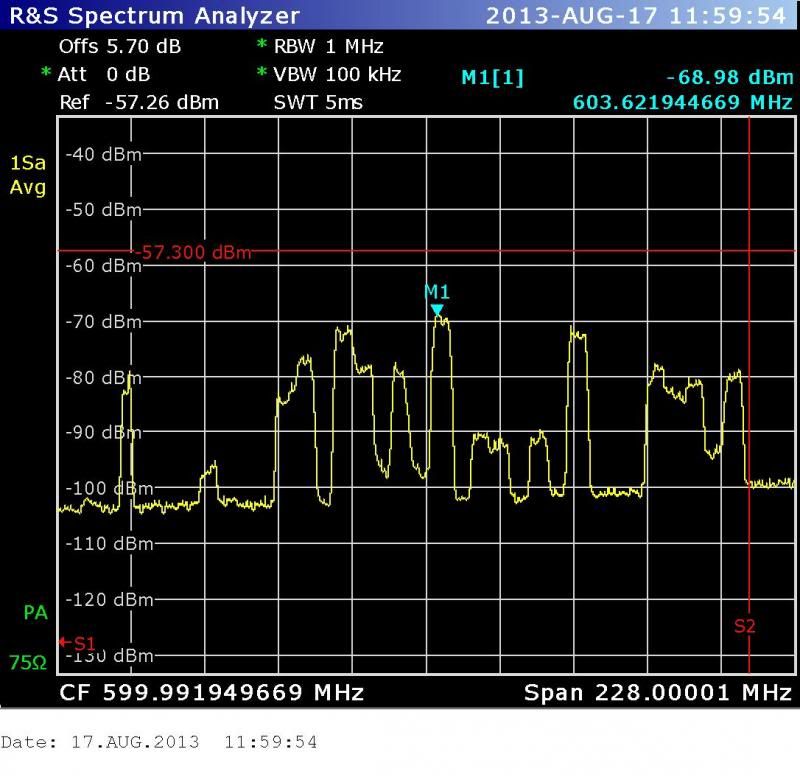
Pic #14:
Batwing only +90 degrees from Mt. Wilson on UHF
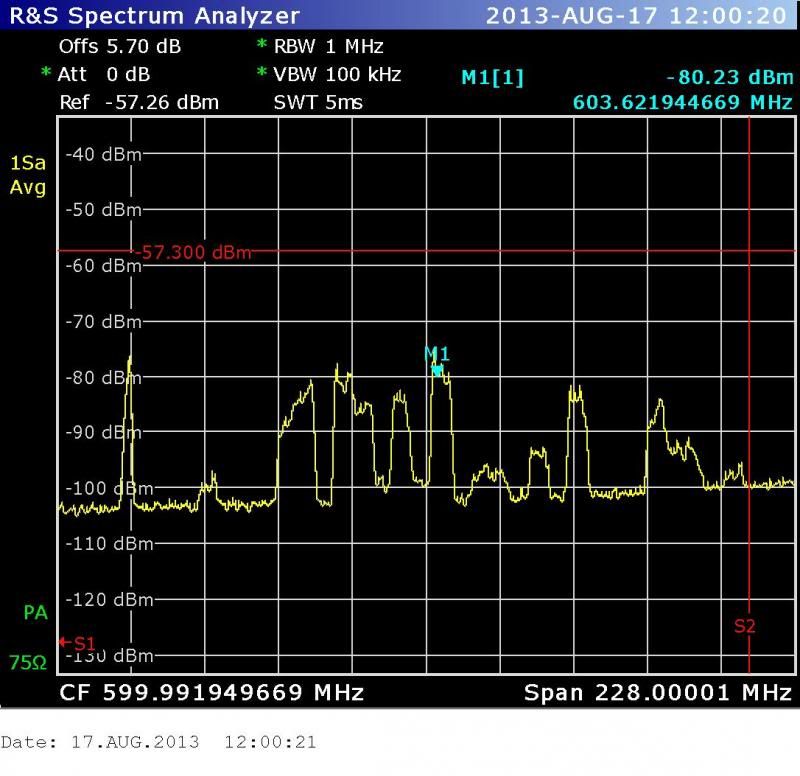
Pic #15:
Batwing only pointed -175 degrees from Mt. Wilson on UHF (Backwards)
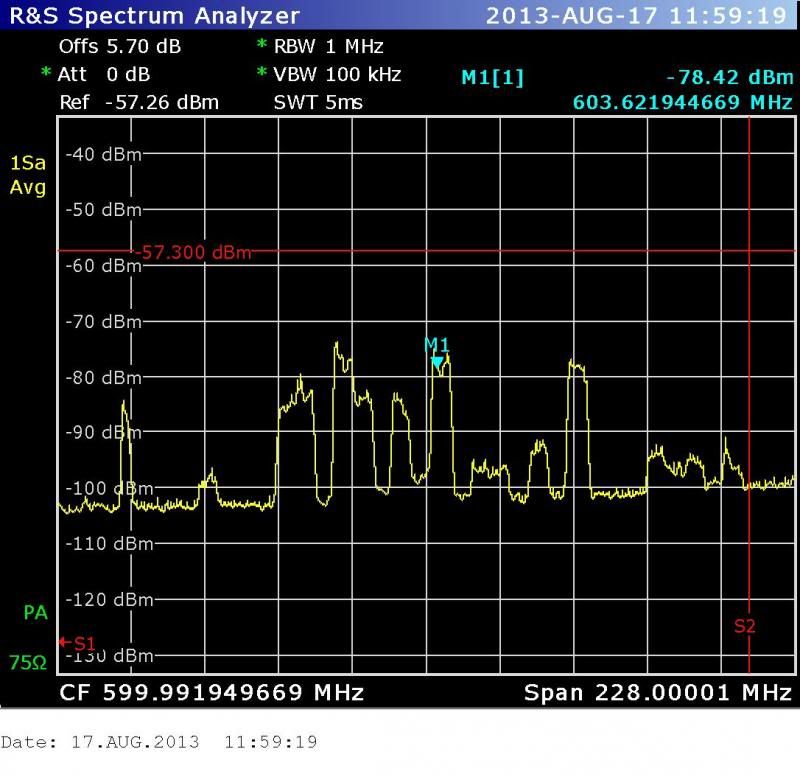
---------------------------------------------------------------------
JACK UHF PERFORMANCE TESTS
Preamp OFF test is obviously the same as it was for the Batwing. Noise is noise, so this was skipped assuming it looks exactly like the 1st picture.
Pic #16:
Preamp on. Essentially no change in the noise floor. Not too bad. Jack Antenna pointed at Mt. Wilson on UHF
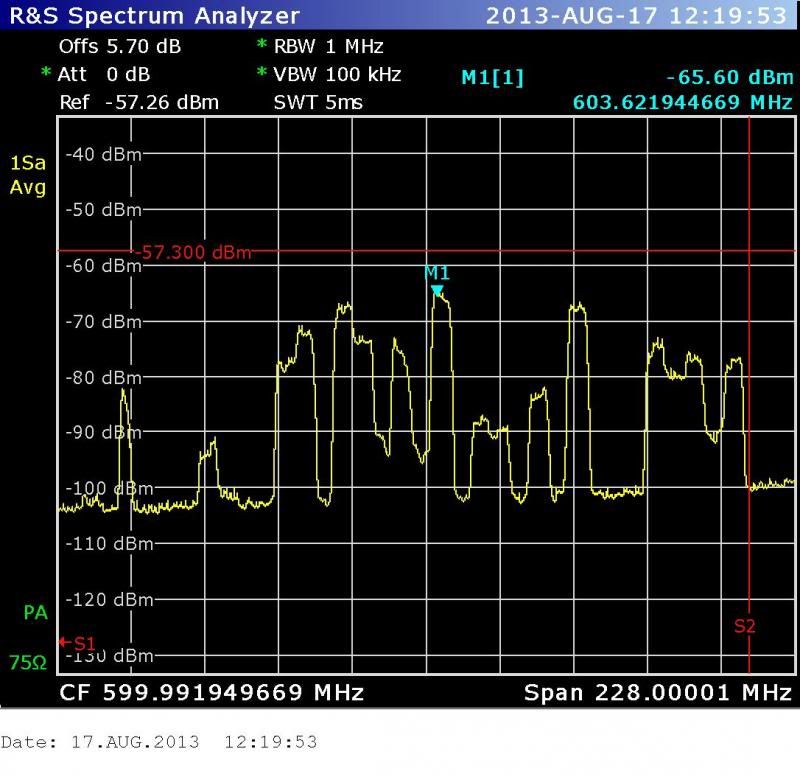
Pic #17:
Jack Antenna pointed -45 degrees from Mt. Wilson on UHF
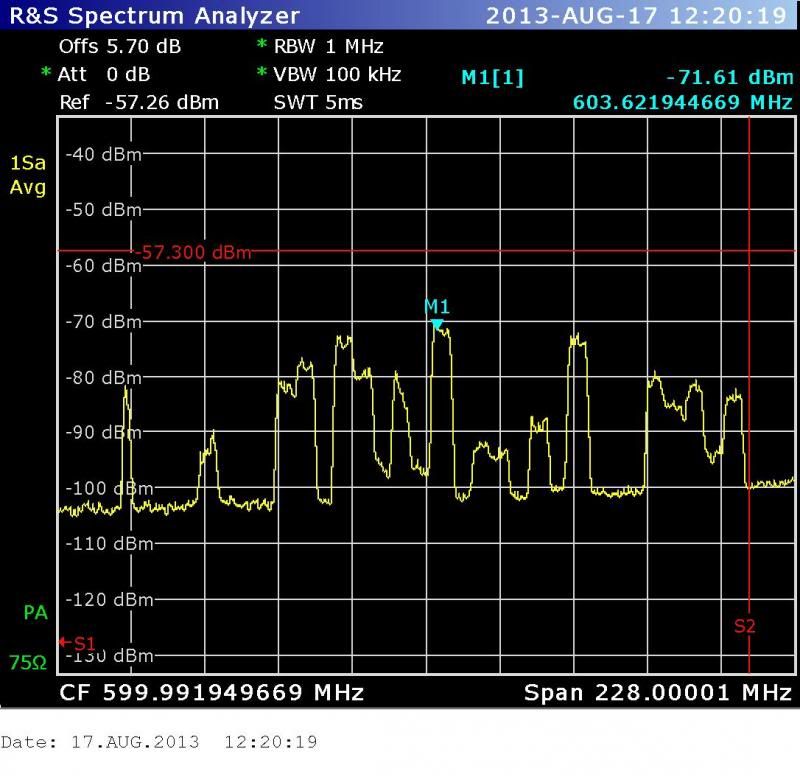
Pic #18:
Jack Antenna pointed -90 degrees from Mt. Wilson on UHF
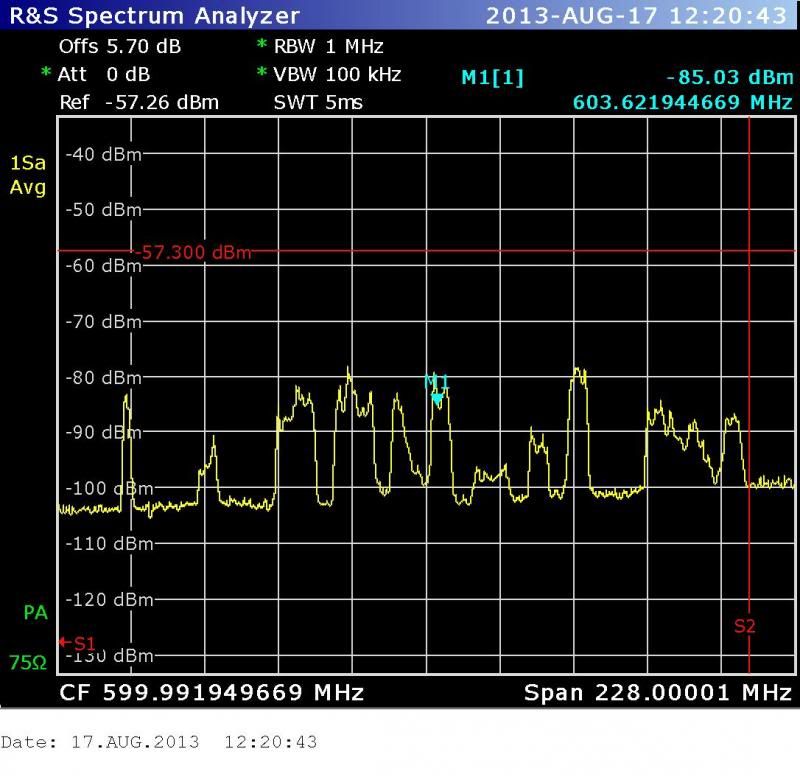
Pic #19:
Jack Antenna pointed +45 degrees from Mt. Wilson on UHF
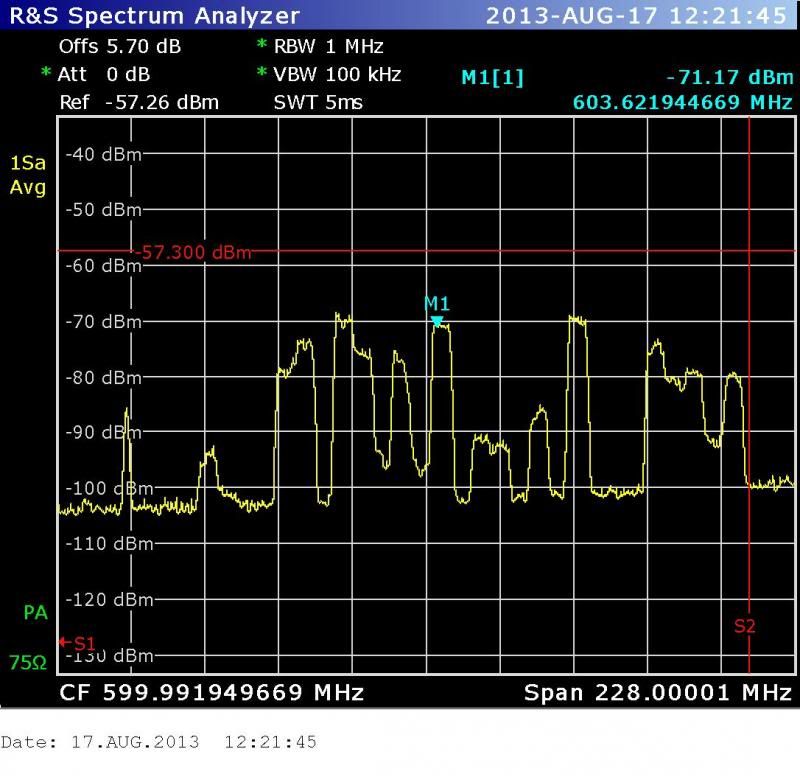
Pic #20:
Jack Antenna pointed +90 degrees from Mt. Wilson on UHF.
NOTE THAT THIS IS ACTUALLY ~80 DEGREES DUE TO MECHANICAL STOPS
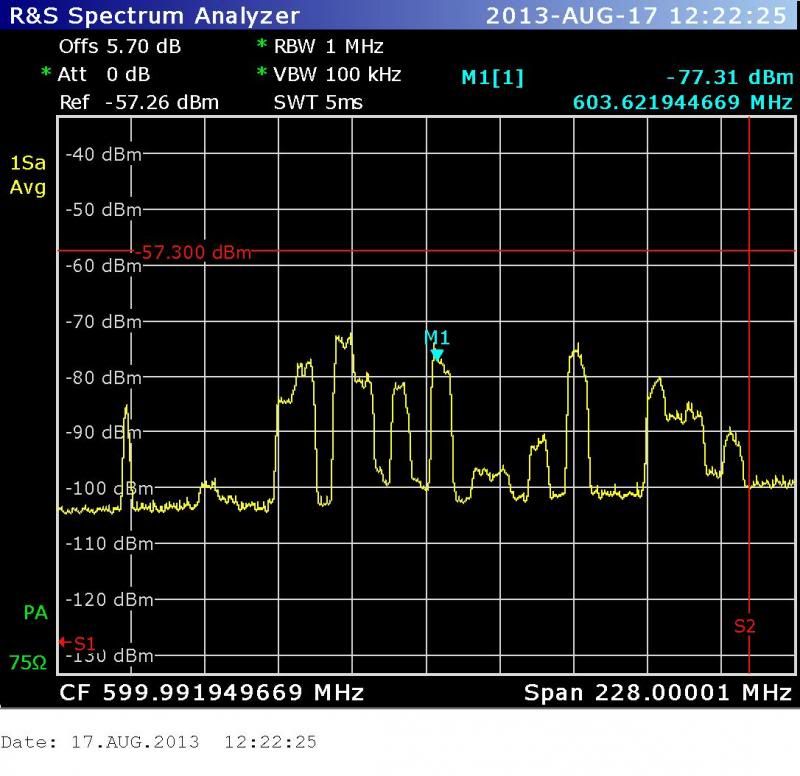
Pic #21:
Jack Antenna pointed -175 degrees from Mt. Wilson on UHF (backwards)
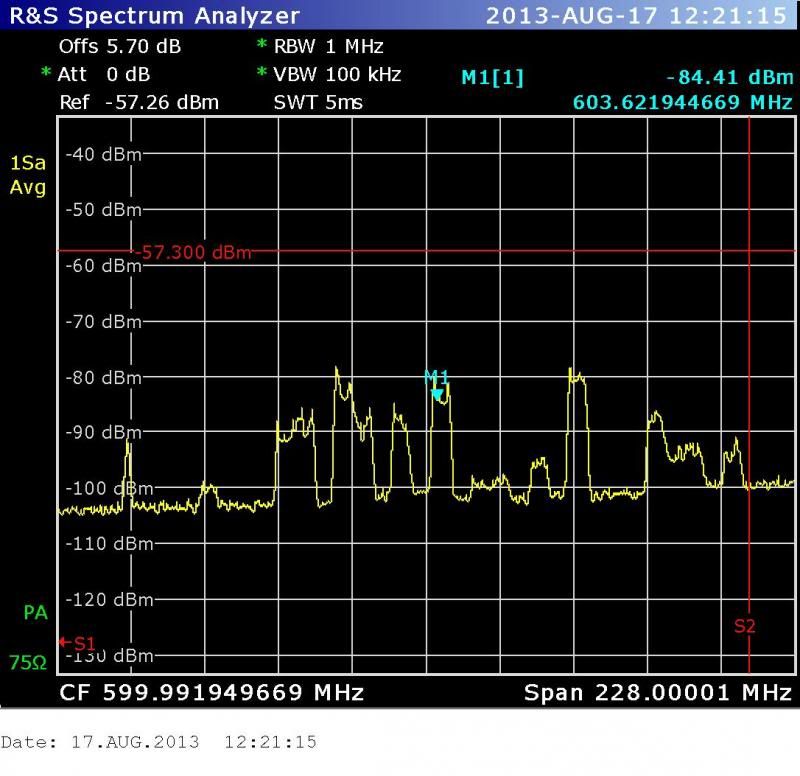
---------------------------------------------------------------------
JACK VHF PERFORMANCE TESTS
Pic #22:
Jack Antenna pointed at Mt. Wilson on VHF
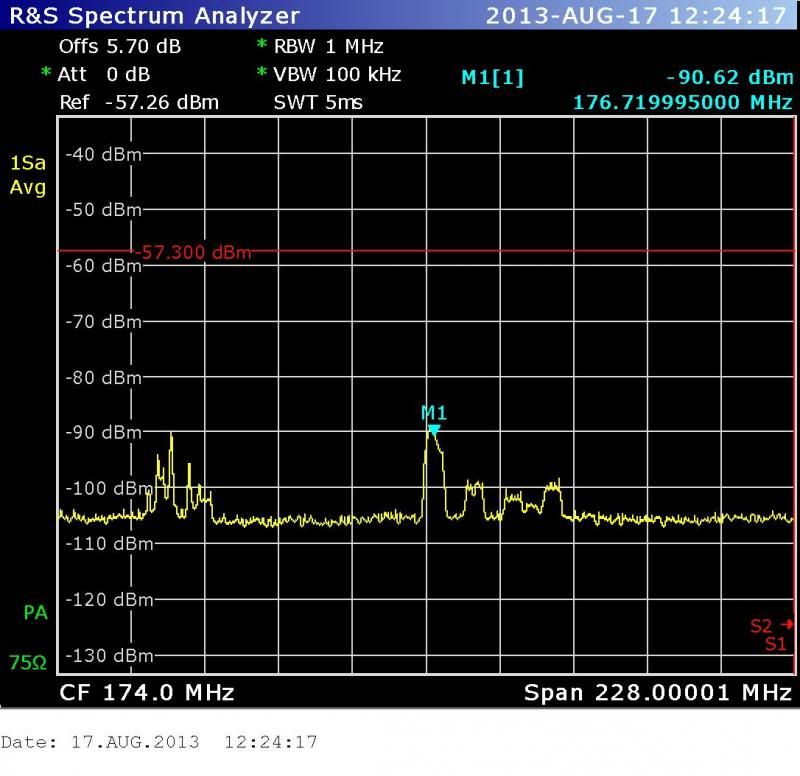
Pic #23:
Jack Antenna pointed -45 degrees from Mt. Wilson on VHF
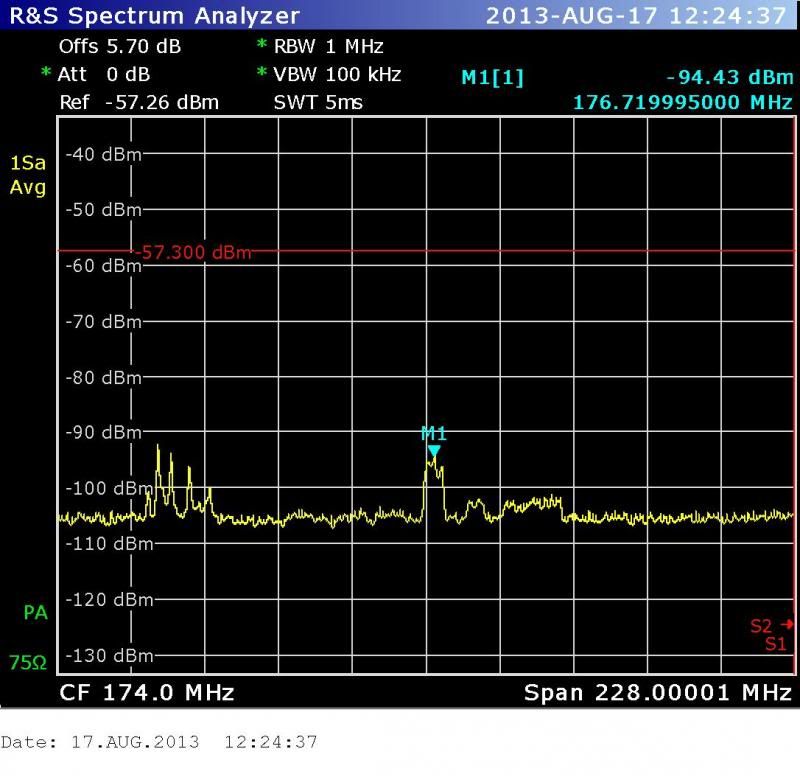
Pic #24:
Jack Antenna pointed -90 degrees from Mt. Wilson on VHF
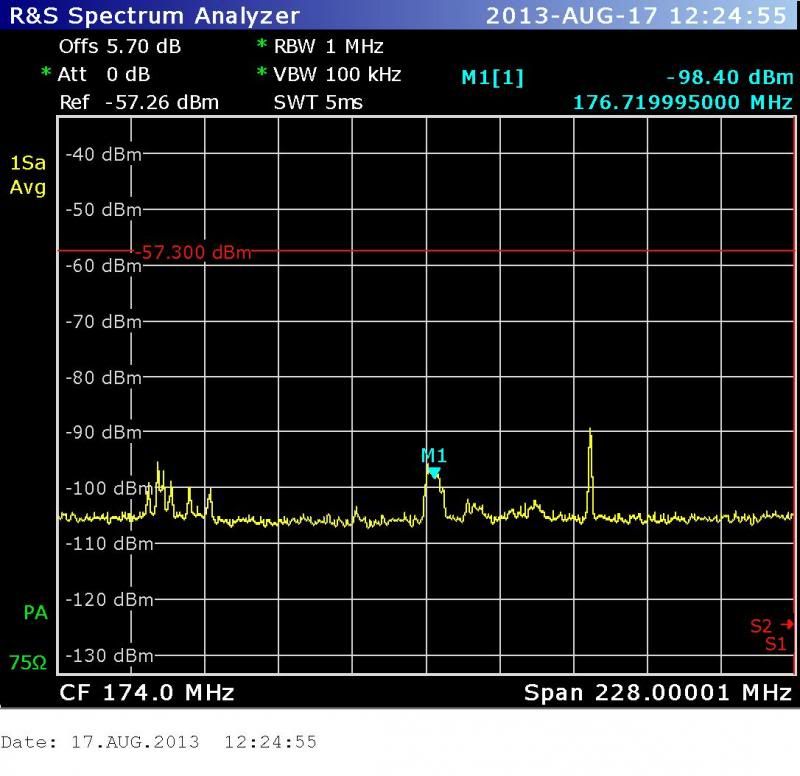
Pic #25:
Jack Antenna pointed +45 degrees from Mt. Wilson on VHF
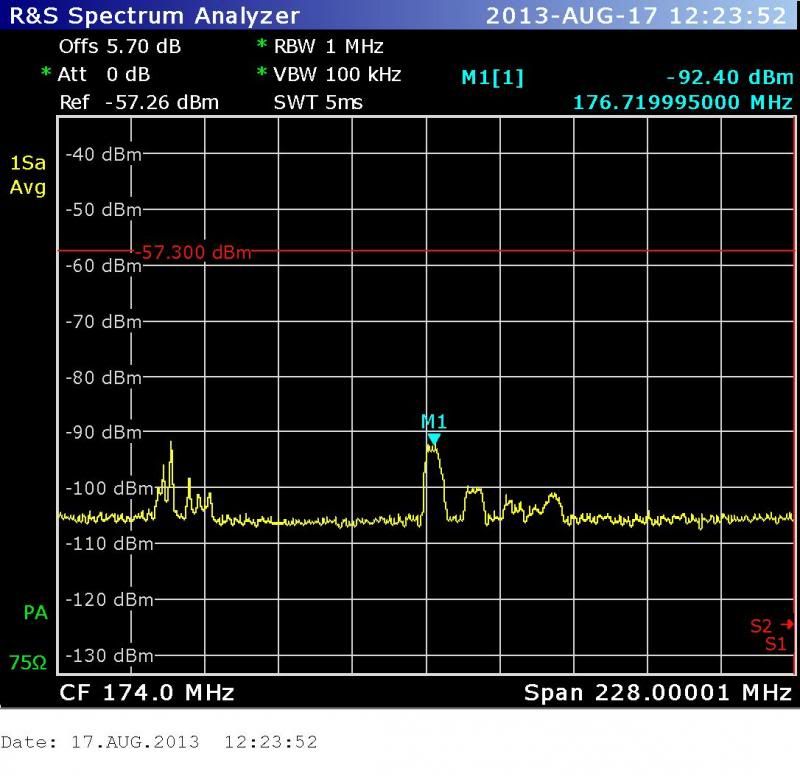
Pic #26:
Jack Antenna pointed +90 degrees from Mt. Wilson on VHF
NOTE THAT THIS IS ACTUALLY ~80 DEGREES DUE TO MECHANICAL STOPS
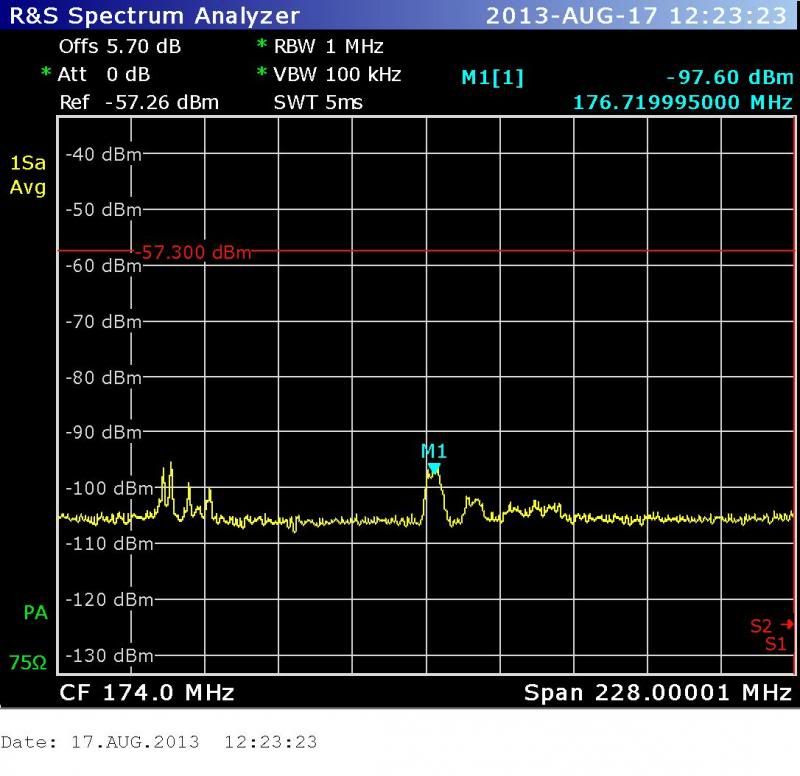
Pic #27:
Jack Antenna pointed -175 degrees from Mt. Wilson on VHF (backwards)
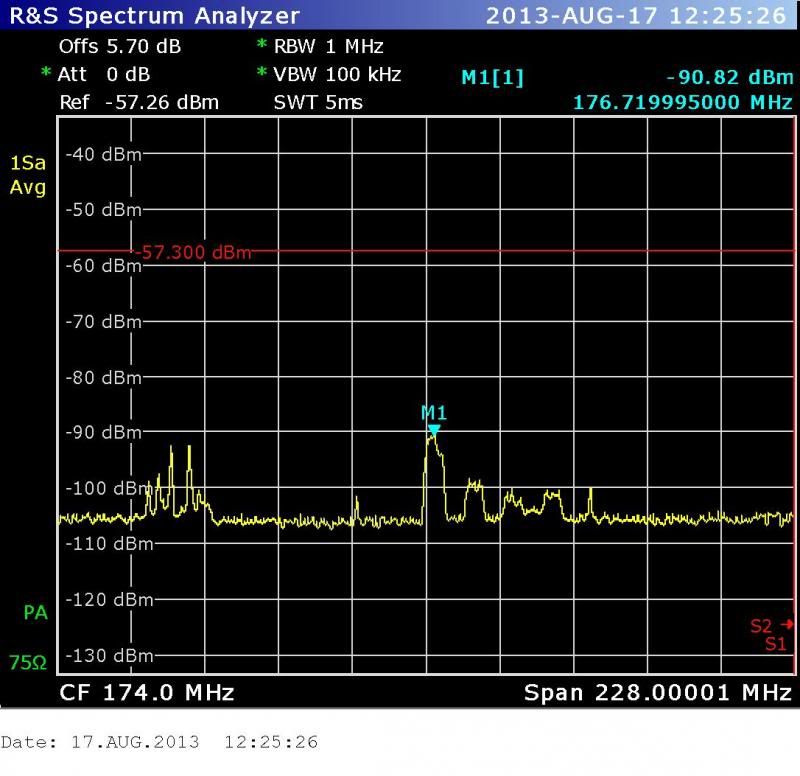
---------------------------------------------------------------------
This is a known good batwing antenna used here. So depending on the age and condition of your Batwing, and whether or not it has a Wingman attached, there may be significant differences compared to these tests.
I kind of expected the poorer performance with the Jack on VHF, but -10db is significant. So on VHF, the Batwing clearly shines over Jack. There are too many VHF stations across the country to ignore this. The other thing that bothers me is the way that the other carriers decay when rotating the Jack. They appear to not be linear, and that's strange
Some keep bringing up the point that the Jack is "easier to point". I didn't see that in these tests. Looking at the Batwing/ Wingman (BatMan )combo against the Jack, and looking at a UHF 45 degree slew on both, there is a -5> 6db drop from the peaked carrier. Essentially the same.
I haven't really looked at the non-Wingman data much just because BatMan and Jack are more closely matched. (edit: Thanks to Dutch for catching me comparing a wrong pic for UHF). Even on UHF there is close to a 6db difference between the two antennas. But the -10db loss in gain with the Jack on VHF is an immediate show stopper for me.
Wheres the Tylenol... ?
(edit: Added numbers to each pic)
The following screen shots were generated by a Rhode & Schwartz ETL Spectrum Analyzer plugged into the Aux TV output of the Winegard switchbox in the RV. All lights: LED and Florescents are off to keep the RFI down to just the noise generated by the antennas internal pre-amp. That’s why there are also pics showing the pre-amp Off on each antenna and band, just to see how much noise they generate in addition to amplifying the signals at the antenna.
The measurements done were:
- Both Batwing & Jack pointed directly at Mt. Wilson on UHF. This same test was done with and without the Wingman attached on the Batwing.
- Both batwing & Jack pointed directly at Mt. Wilson on VHF. Wingman not tested has as it has no effect on VHF
- Additionally I took measurements at: -90, -45, +45, +90, and -175 degrees (mechanical stop problem). These are +& - measurements from the primary path of 116 degrees(mag) direct to Mt. Wilson.
The technical folks here will be able to read these pix, but for the non-technicals, pay particular attention to M1. M(arker)1 is simply a measurement point that measures antenna signal at the exact same frequency for consistency and displays the result number at the top of the screen. BTW- M1 is showing the TV carrier of Ch.36 (KTLA) on UHF, and Ch.7 (KABC) on VHF . LOWER NUMBERS ARE BETTER! Even though these numbers don’t move more than 10 points or so, any change of +-3db is (in marketing lingo) a 100% change in performance. The Wingman increased the Batwing performance by 3db (that can again be seen if you compare a Wingman and non-Wingman pic side by side) on UHF, so they claimed a 100% improvement. Technically true, but as a broad stroke explanation, assume that this 3db difference can easily make the difference between watchable TV or none at all, and the Wingman has proven that. Also when looking at the skew data the techies may notice that the scans are not exactly the same carrier-wise. Thats because I have adjacent channels in the high desert and toward Santa Barbara that will pop up if pointed in that direction. But they have no affect on this data.
If you look at the different signals on each picture, they should track each other. i.e.- The level differences between M1, or the carrier that it is measuring in the screen shot should look, or move vertically in level, exactly the same on all of the TV signals shown in the screen shot. If not, there are possibly response or physical design issues on the antenna. Not broken, just not perfect. Sorry for all of the pix, but it is what it is if someone wants to be able to review any combination in any direction in the future.
Here goes:
Pic #1:
Here is a shot of the Batwing with the Amp OFF just to see how the noise floor changes.

Pic #2:
No change in the noise floor. Thats good! OK, Batwing/ Wingman, Preamp on, pointed at Mt. Wilson on UHF

Pic #3:
Batwing/ Wingman pointed -45 degrees from Mt. Wilson on UHF

Pic #4:
Batwing/ Wingman pointed -90 degrees from Mt. Wilson on UHF

Pic #5:
Batwing/ Wingman pointed +45 degrees from Mt. Wilson on UHF

Pic #6:
Batwing/ Wingman pointed +90 degrees from Mt. Wilson on UHF

Pic #7:
Batwing/ Wingman pointed -175 degrees from Mt. Wilson on UHF (Backwards)

Looking at M1, a 21db difference is huge! This is a very directional antenna from 90 degrees around to the back of the antenna, to 270 degrees. Thats a good thing as it helps eliminate reflections and interference from other nearby transmitters.
Pic #8:
THESE ARE THE BATWING VHF TESTS
Batwing only pointed at Mt. Wilson on VHF

Pic #9:
Batwing only -45 degrees from Mt. Wilson on VHF

NOTE: + & - 90 DEGREE OR BACKSIDE TESTS WERE NOT PERFORMED ON VHF
---------------------------------------------------------------------
BATWING UHF TESTS WITH WINGMAN REMOVED
Pic #10:
Batwing only pointed at Mt. Wilson on UHF

Pic #11:
Batwing only -45 degrees from Mt. Wilson on UHF

Pic #12:
Batwing only -90 degrees from Mt. Wilson on UHF

Pic #13:
Batwing only +45 degrees from Mt. Wilson on UHF

Pic #14:
Batwing only +90 degrees from Mt. Wilson on UHF

Pic #15:
Batwing only pointed -175 degrees from Mt. Wilson on UHF (Backwards)

---------------------------------------------------------------------
JACK UHF PERFORMANCE TESTS
Preamp OFF test is obviously the same as it was for the Batwing. Noise is noise, so this was skipped assuming it looks exactly like the 1st picture.
Pic #16:
Preamp on. Essentially no change in the noise floor. Not too bad. Jack Antenna pointed at Mt. Wilson on UHF

Pic #17:
Jack Antenna pointed -45 degrees from Mt. Wilson on UHF

Pic #18:
Jack Antenna pointed -90 degrees from Mt. Wilson on UHF

Pic #19:
Jack Antenna pointed +45 degrees from Mt. Wilson on UHF

Pic #20:
Jack Antenna pointed +90 degrees from Mt. Wilson on UHF.
NOTE THAT THIS IS ACTUALLY ~80 DEGREES DUE TO MECHANICAL STOPS

Pic #21:
Jack Antenna pointed -175 degrees from Mt. Wilson on UHF (backwards)

---------------------------------------------------------------------
JACK VHF PERFORMANCE TESTS
Pic #22:
Jack Antenna pointed at Mt. Wilson on VHF

Pic #23:
Jack Antenna pointed -45 degrees from Mt. Wilson on VHF

Pic #24:
Jack Antenna pointed -90 degrees from Mt. Wilson on VHF

Pic #25:
Jack Antenna pointed +45 degrees from Mt. Wilson on VHF

Pic #26:
Jack Antenna pointed +90 degrees from Mt. Wilson on VHF
NOTE THAT THIS IS ACTUALLY ~80 DEGREES DUE TO MECHANICAL STOPS

Pic #27:
Jack Antenna pointed -175 degrees from Mt. Wilson on VHF (backwards)

---------------------------------------------------------------------
This is a known good batwing antenna used here. So depending on the age and condition of your Batwing, and whether or not it has a Wingman attached, there may be significant differences compared to these tests.
I kind of expected the poorer performance with the Jack on VHF, but -10db is significant. So on VHF, the Batwing clearly shines over Jack. There are too many VHF stations across the country to ignore this. The other thing that bothers me is the way that the other carriers decay when rotating the Jack. They appear to not be linear, and that's strange
Some keep bringing up the point that the Jack is "easier to point". I didn't see that in these tests. Looking at the Batwing/ Wingman (BatMan )combo against the Jack, and looking at a UHF 45 degree slew on both, there is a -5> 6db drop from the peaked carrier. Essentially the same.
I haven't really looked at the non-Wingman data much just because BatMan and Jack are more closely matched. (edit: Thanks to Dutch for catching me comparing a wrong pic for UHF). Even on UHF there is close to a 6db difference between the two antennas. But the -10db loss in gain with the Jack on VHF is an immediate show stopper for me.
Wheres the Tylenol... ?
(edit: Added numbers to each pic)
